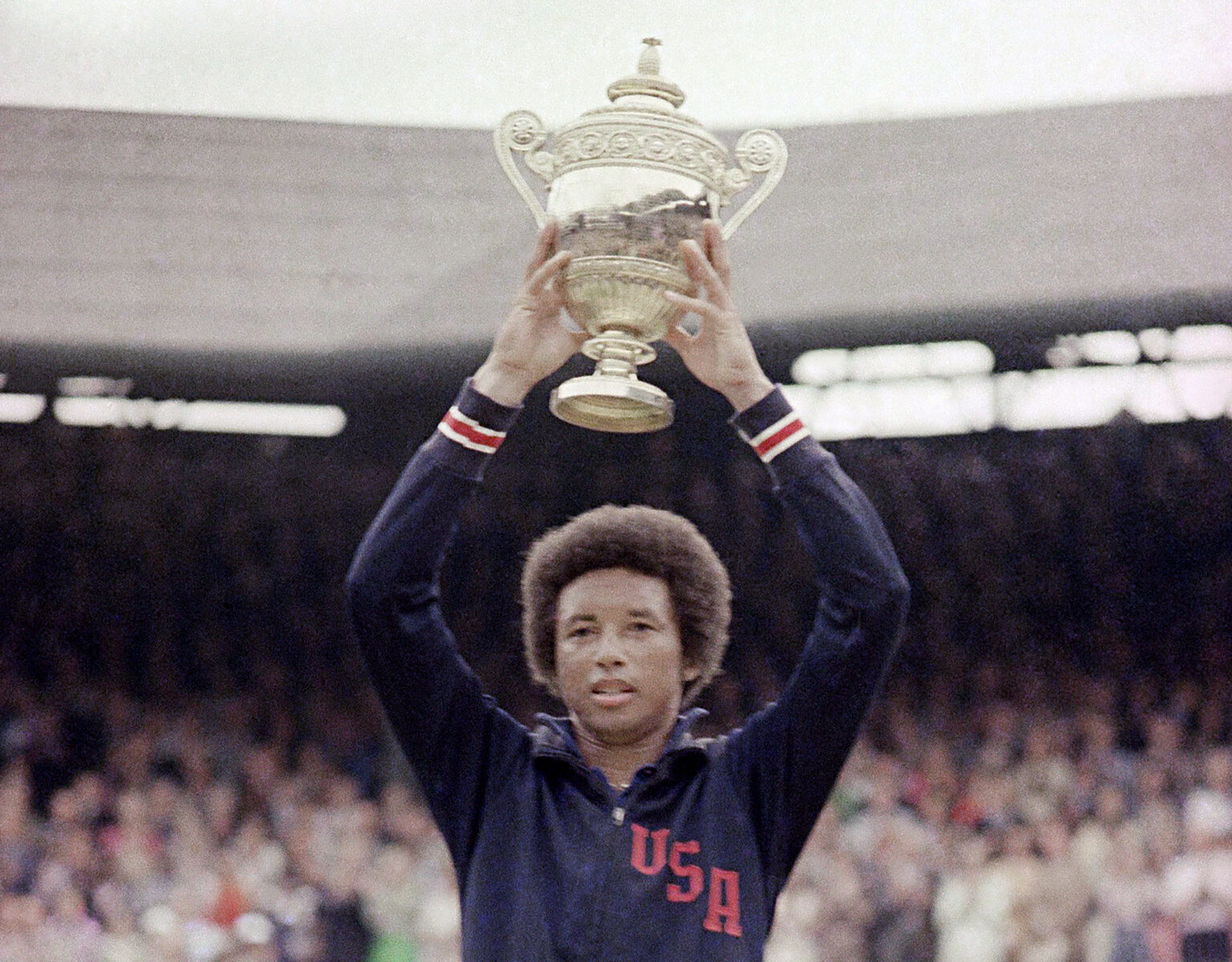Arthur Ashe’s Historic Triumph at Wimbledon: A Tale of Strategy, Courage, and Legacy
A Pioneering Moment in Tennis History
Fifty years ago, in the hallowed grounds of Wimbledon, Arthur Ashe defied expectations and transformed the sport’s narrative. Entering his sole Wimbledon final at nearly 32 years old, Ashe had navigated a challenging draw, emerging as a sentimental favorite with a reputation rooted in resilience and intelligence. With time pressing against him, his burning ambition to claim the title was undeniable. Yet, standing across the net was a formidable opponent equally determined to defend his crown.
The Challenger: Jimmy Connors
On July 5, 1975, Ashe faced Jimmy Connors, a dynamic left-handed powerhouse nine years his junior. Connors was riding an extraordinary wave of success, having lost only four matches in 1974 and establishing himself as a dominant force on the court. His undefeated run to the final, without dropping a single set, underscored his relentless drive. Notably, Connors held a 3-0 head-to-head record against Ashe and was embroiled in a legal dispute with him, having sued Ashe for libel after being accused of shirking Davis Cup commitments-a reflection of the intense rivalry and tension surrounding their encounter.
A Tactical Masterstroke
Ashe’s biographer, Ray Arsenault, recalls how Ashe approached the match with meticulous planning. Recognizing Connors’ exceptional ability to counterpunch when met with power, Ashe made a radical strategic shift overnight. He abandoned his usual aggressive serve-and-volley style, opting instead for a defensive, craftier game. His tactics included slicing low, angled shots that kept Connors off-balance, softening his serve, and choosing shots with deliberate intent just moments before executing them. This transformation showcased Ashe’s greatest asset: his intellect and strategic thinking, rather than raw power.
The Match: An Unforgettable Upset
The result was a stunning upset. Ashe lost the first game of the match but then dominated the next nine, ultimately winning in four sets-6-1, 6-1, 5-7, 6-4-in just over two hours. His victory not only stunned the tennis world but also marked a historic milestone: Ashe became the first Black man to win Wimbledon singles, following Althea Gibson’s trailblazing wins in the late 1950s. To this day, Ashe remains the only Black male champion at Wimbledon, cementing his legacy in the sport’s history.
A Symbol of Hope and Pride
Post-match, Ashe reflected on the significance of his victory. When asked if his win represented a victory for Black athletes, he responded with characteristic humility, emphasizing its broader impact. “It’s a tremendous boost,” he said. “It reinforces in young minds that heroes can come from anywhere, and that we all have the potential to excel just as well as anyone else.” His triumph was more than a personal achievement; it was a beacon of hope for aspiring athletes of color worldwide.
Beyond the Court: Ashe’s Enduring Legacy
A Life of Transformation and Activism
Arthur Ashe’s story extends far beyond his tennis accomplishments. Born and raised in Richmond, Virginia, Ashe’s early years were shaped by the harsh realities of Jim Crow segregation. His upbringing by a strict father after his mother’s death instilled discipline and resilience. From a young age, Ashe understood that his conduct on and off the court could influence perceptions of Black athletes and communities.
From Silent Role Model to Vocal Advocate
Initially, Ashe preferred to lead by example, believing that success on the court could inspire change without overt activism. However, the tumultuous events of 1968-marked by the assassinations of Martin Luther King Jr. and Robert F. Kennedy-catalyzed a shift. Ashe, then a rising star at West Point, became increasingly aware of his social responsibility. His first public speech, delivered at a Washington church, addressed the role of Black athletes in social justice, with notable figures like Stokely Carmichael in attendance.
A Voice for Justice and Human Rights
Ashe’s calm, thoughtful demeanor made him an effective and respected advocate. His advocacy extended to protesting apartheid in South Africa, leading to arrests outside the South African embassy in 1985, and speaking out against racial inequality in the United States. His activism was driven by a profound sense of purpose, rooted in his own experiences of discrimination and his desire to foster equality.
A Legacy of Courage and Inspiration
In 1968, Ashe’s victory at the U.S. Open as the first Black man to claim that title provided him with a platform to amplify his voice. His outspoken stance on civil rights and social issues often put him at odds with authorities, resulting in two arrests. Yet, his unwavering commitment to justice never wavered. Ashe’s life exemplifies how resilience, intelligence, and moral conviction can redefine what it means to be a champion-both on and off the court.
The Enduring Impact of Arthur Ashe
Arthur Ashe’s journey from a disciplined child in segregated Virginia to a global icon of sport and social activism underscores the power of reinvention and purpose. His strategic brilliance in tennis, exemplified by his 1975 Wimbledon victory, remains a testament to the importance of intellect and adaptability. Meanwhile, his lifelong dedication to civil rights and humanitarian causes continues to inspire generations, proving that true greatness encompasses both athletic excellence and moral integrity.

